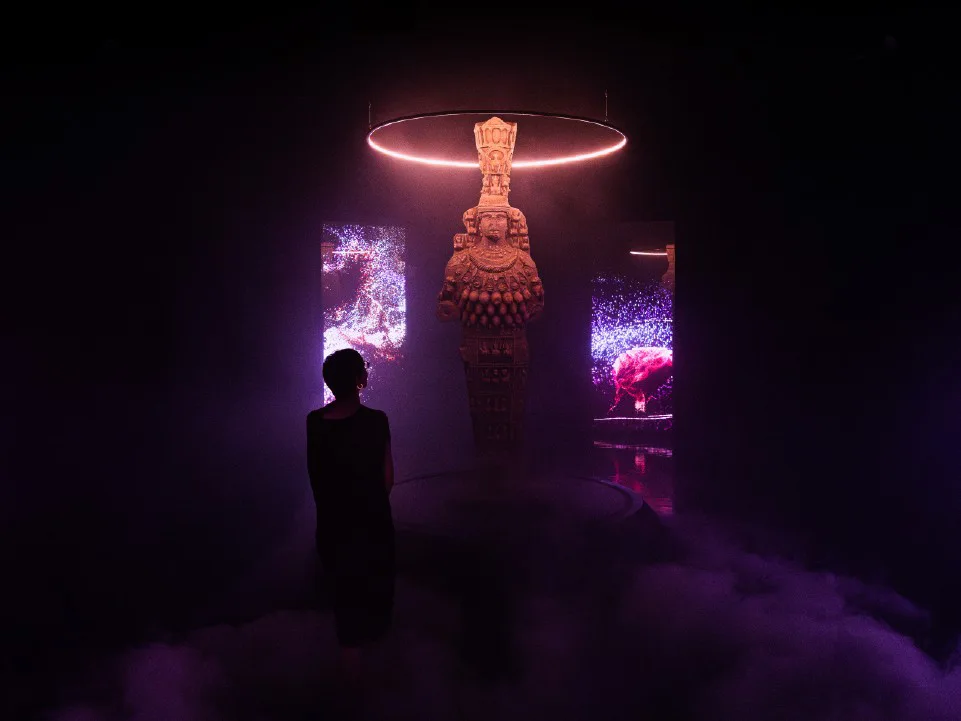Immersive Experiences and Their Effects on the Human Brain: What Makes Them So Powerful?
Immersive technologies are revolutionizing the way we learn, explore, and connect with the world around us. From virtual reality (VR) headsets to multisensory museum exhibits, these tools create environments so engaging that they blur the lines between reality and imagination. But how exactly do these experiences captivate us so completely? And what do they do to our brains?
What Are Immersive Technologies, and Why Are They So Addictive?
Immersive technologies encompass VR, augmented reality (AR), and other tools that create a lifelike simulation of environments. The key to their addictive nature lies in their ability to engage multiple senses—sight, sound, touch, and sometimes even smell—simultaneously. This multisensory input tricks the brain into perceiving the experience as real.
When you step into an immersive museum, for example, your brain starts treating the 3D visuals, ambient sounds, and tactile interactions as if you’re genuinely present at a different time or place. This level of engagement is not only entertaining but also deeply memorable.
How Does the Brain React to Immersive Experiences?
Immersive environments stimulate the brain’s sensory and emotional centers. Here’s a breakdown:
- Heightened Memory Retention: Studies show that VR and immersive experiences activate the hippocampus, the part of the brain responsible for memory. This is why walking through a virtual reconstruction of ancient Ephesus may leave a more lasting impression than reading about it in a book.
- Increased Dopamine Levels: Immersive activities often trigger a rush of dopamine, the “happy hormone,” enhancing feelings of joy, curiosity, and motivation.
- Empathy Boost: Immersive experiences can evoke strong emotional responses by placing users in someone else’s shoes. For instance, experiencing a day in the life of a historical figure can foster deeper empathy and understanding.
Can Immersive Museums Improve Learning?
Absolutely! Immersive museums like the Ephesus Experience Museum and Hagia Sophia History & Experience Museum use cutting-edge technology to blend storytelling with sensory engagement. This approach enhances learning in the following ways:
- Interactive Education: Touching artifacts or virtually “walking” through historical landmarks transforms passive learning into active exploration.
- Emotional Connection: Feeling the grandeur of a historical event through immersive displays makes the experience resonate on a personal level, which improves recall.
- Adaptability: Immersive tools can be tailored for various age groups, ensuring accessibility for everyone from schoolchildren to academics.
Why Are Multisensory Experiences So Memorable?
The human brain encodes memories more effectively when multiple senses are engaged. For example, hearing the sound of footsteps echoing in a recreated Roman street while seeing the cobblestones and smelling baked bread creates a richer, more vivid memory. This phenomenon, called sensory integration, is why immersive museums leave such a lasting impact.
What Does the Future Hold for Immersive Technologies?
As technology advances, immersive experiences are set to become even more realistic and impactful. Imagine:
- Haptic Feedback: Gloves and suits that let you feel textures and temperatures.
- AI-Powered Personalization: Tailored experiences based on individual preferences and learning styles.
- Brain-Computer Interfaces (BCIs): Direct interaction between your mind and virtual environments.
These innovations promise not only to redefine entertainment but also to open new doors in education, mental health, and beyond.
Ready to Discover Your Next Immersive Experience Venue?
The Ephesus Experience Museum offers a timeless journey, where cutting-edge immersive technology effortlessly intertwines the mythical and historical legacies of one of the ancient world’s most iconic cities. Located in Türkiye’s İzmir, Selçuk district, this award-winning museum offers visitors a chance to explore the vibrant streets of Ephesus, complete with immersive visuals, interactive storytelling, and sensory elements that bring history to life like never before.
The Hagia Sophia History & Experience Museum, situated at the historic Sultanahmet Square, also known as the Hippodrome, is another internationally recognized gem that celebrates the magnificence of Istanbul’s cultural heritage. Using innovative storytelling and immersive design, this venue creates a captivating exploration of Hagia Sophia’s historical and spiritual significance through different periods. From its breathtaking architecture to its intricate narratives, the museum offers a deeply engaging way to connect with one of the world’s most celebrated landmarks.
Why Immersive Experiences Are More Than Just a Trend
Immersive technologies aren’t just about flashy visuals or futuristic gadgets. They tap into the very essence of human perception, creating connections and memories that linger long after the experience ends. For museums and educational spaces, this means an unparalleled opportunity to engage visitors on a deeper level.
So, the next time you step into an immersive exhibit, know that you’re not just exploring history—you’re rewiring your brain for wonder.


